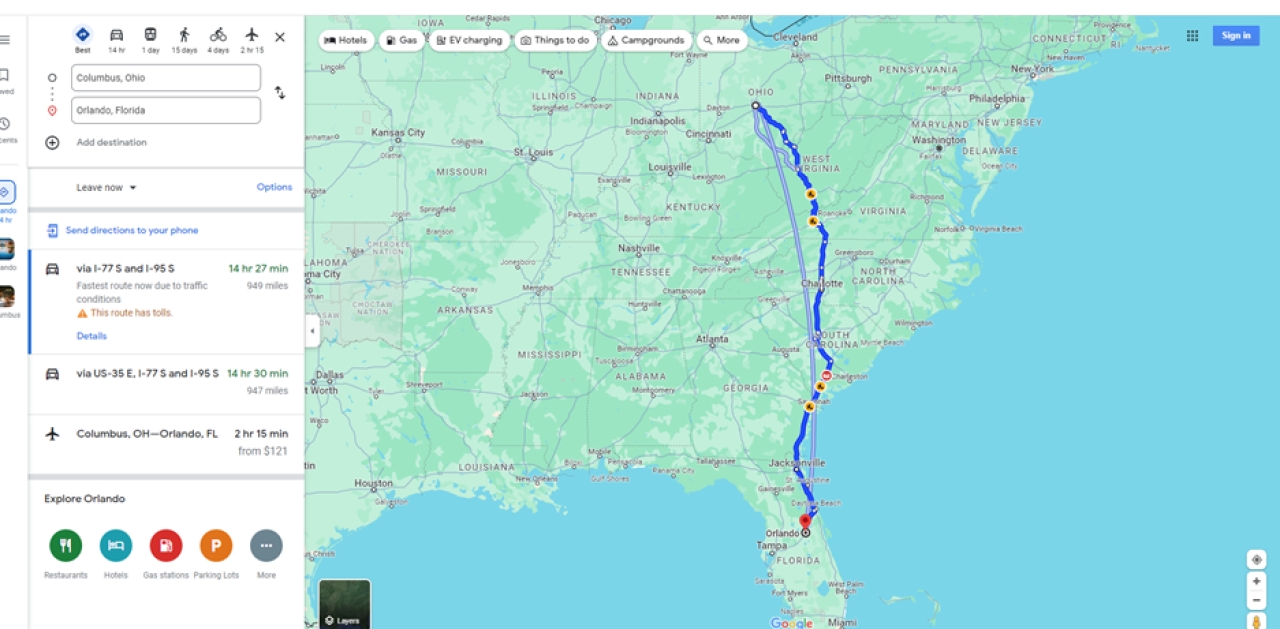Protecting Your Right to Freedom
The car is a ticket to freedom. That’s why in Ohio we protect your ability to choose the vehicle best for you.
Since its dawn in Detroit, the American car revolution has changed our country for the better. Transportation keeps us connected and our economy strong. Ohio’s economy is even leading in the automotive industry, including the second largest workforce in the nation in motor vehicle and parts manufacturing.
Most importantly, your vehicle gets you to work, your kids to school, and keeps your life moving. The car is now a part of everyday life in America. And practically every household.
More than 90% of U.S. households had at least one vehicle in 2021. Ohio beats this statistic: 92.5% of Ohio households have at least one family car.
For the typical American, the car keeps them progressing down the path to prosperity. But government mandates will pose roadblocks for some.
Just look at California.
For the last several decades, the state has adopted stricter standards on vehicle emissions. Ever since 1990, the California Air Resources Board has moved progressively down the regulatory highway, moving its emission standards to levels even higher than the federal government’s own benchmarks.
But the Board’s newest standards are arguably their worst. In 2022, the Board decided to restrict Californians from buying certain cars based on what powers them.
You can probably guess it: gas is dying in California.
By 2035, all California sales of new passenger cars and trucks must be for electric or hydrogen powered vehicles. The process begins in 2026. 35% of new vehicle sales must be zero-emission vehicles or plug-in hybrid electric vehicles. That percentage will increase each year until fully phased in.
Surely that’s just kooky California. Nowhere else would dare try something so radical...right?
Sadly, no. 17 other states have adopted California’s notoriously high emissions standards. 15 of these states are using the California model for zero-emission vehicles as well.
Want to guess where those states are?
Soon, many Americans in our coastal regions will not be able to decide what type of car they want to buy – the government will make that choice for them.
Ohio will not be the next California. Instead, we decided to protect consumer choice by passing House Bill 201. I was proud to cosponsor the bill, along with three other state senators, which the governor signed into law on December 28.
House Bill 201 prohibits the state or any township and county from restricting vehicle sales based on how they are powered. The bill also prevents the state from adopting the California emissions standards.
This legislation is simple: it lets you decide the best car for you and your family. Electric or gas, it’s up to you.
And an electric vehicle may be right for you. But not for every Ohioan.
Electronic vehicles are still significantly more expensive than the traditional gas car. The U.S. Department of Energy found that it would likely take 15 years for an EV buyer to make up for the higher purchase price. And these vehicles are more expensive to repair and insure.
That’s before you charge them.
Consumers have to consider charging their cars at home or elsewhere. And the country still lacks electric charging stations. Many of these “charging deserts” are in rural America, including rural Ohio.
Most Ohioans are going to weigh these options. That includes the upfront and hidden costs that could wreak havoc on their budgets and their lives.
Some will not even consider an EV at all. Where would they charge it in Fremont or New Lexington? Or on their great American family road trip?
Just look at Tesla’s trip planner versus Google maps.
Say you live in Cincinnati but you want to visit your parents in Ashtabula. It would only take you 4.5 hours in a gas car according to Google maps. You wouldn’t even need to stop to fill your tank. But your Tesla would need to charge in Mt. Gilead for nearly half an hour.
Google map:

Tesla map:

Maybe you want to take the kids to Disney World from your home in Columbus. The typical 14.5 hour drive you could power through would take nearly 3 hours longer because of multiple charges—some taking 40 minutes each.
Google map:

Tesla map:

“Are we there yet?”
Beyond just charging the car, how could some Ohioans afford one in the first place?
MIT found that the current average EV buyer has the income and access to charging that makes such a purchase reasonable. But lower-income Americans will be left behind in ever-greater numbers simply because they can’t afford these vehicles, despite what the government may mandate.
Shocker.
Government mandates are one-size-fits-all deals that only work for a few; they punish the average Joe or Jill with higher costs and more stress.
EV mandates may work for the liberal elites in major metropolitan cities, but not always for the rest of us in the Heartland.
Ohioans can make these decisions for themselves.
Ohio State Senator Rob McColley, (R-Napoleon), represents the 1st District.
